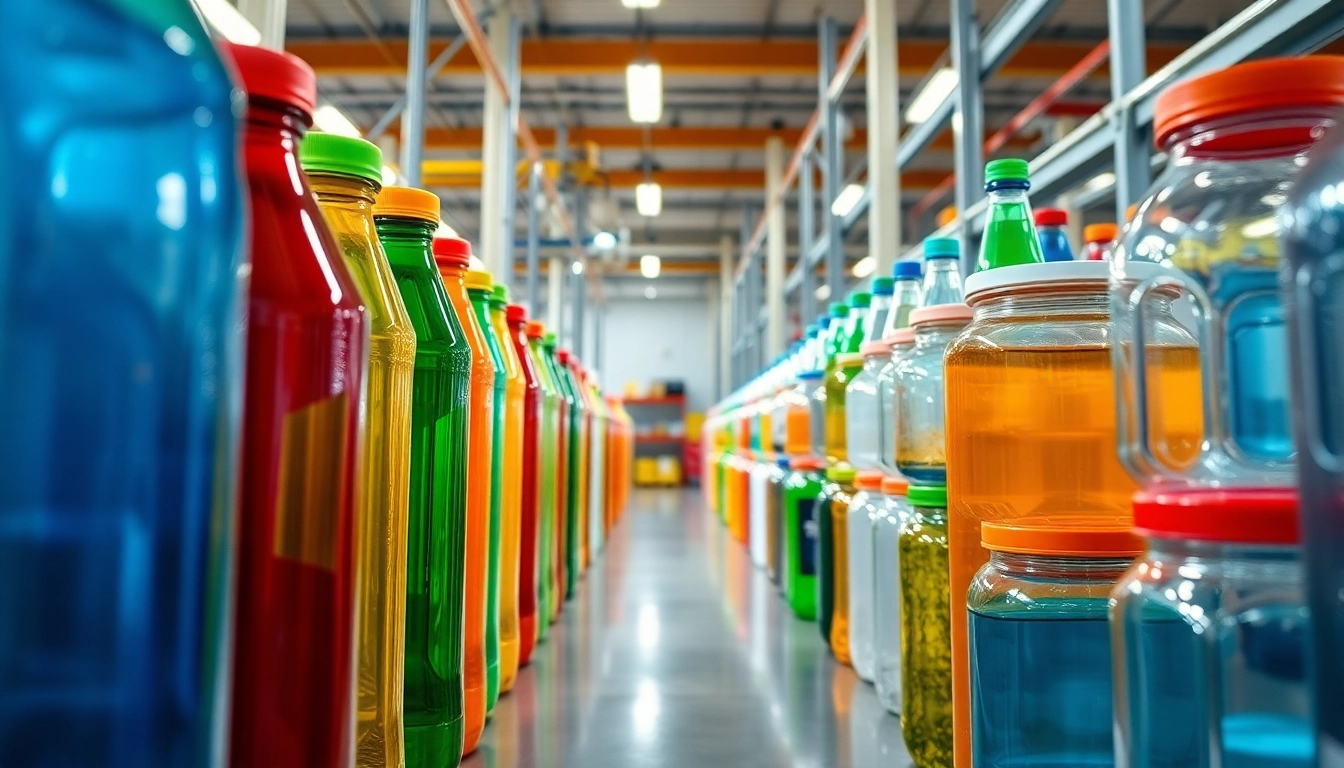Introduction to Plastic Bottles and Packaging Materials
In today’s dynamic packaging landscape, plastic bottles have become an indispensable component across numerous industries including cosmetics, food and beverage, pharmaceuticals, and household chemicals. These versatile containers are favored for their durability, lightweight nature, cost-effectiveness, and adaptability to various product types. As the demand for eco-friendly and innovative packaging solutions grows, understanding the fundamental attributes and advantages of plastik şişe is crucial for manufacturers seeking to stay competitive and meet consumer expectations. This article delves into the essentials of plastic bottles, explores various types and materials, emphasizes quality standards, and discusses future trends impacting the industry.
Understanding the Benefits of Plastic Bottle Packaging in Modern Industry
Plastic bottles serve as the backbone of modern packaging due to their exceptional flexibility and resilience. They offer protective barriers that preserve product integrity, prevent contamination, and extend shelf life. Their lightweight profile reduces transportation costs and carbon emissions, aligning with the sustainability goals of many companies. Additionally, plastic bottles lend themselves well to graphical customization through printing, allowing brands to enhance their visual identity without significantly increasing costs. The ease of manufacturing and recycling further cements their position as a sustainable option in the packaging domain, especially when produced using recyclable plastics such as PET and HDPE.
Types of Plastic Bottles: From Small to Large Containers
Plastic bottles come in a diverse range of shapes and sizes, tailored for specific applications:
- Small Bottles: Typically used for cosmetics, pharmaceuticals, or sample products, these range from 10ml to 200ml.
- Medium Bottles: Common in beverage and household product segments, sizes between 200ml and 1 liter are prevalent.
- Large Containers: These include 2-liter bottles for drinks or large chemical drums, often requiring reinforced structural design for safety and durability.
Manufacturers often implement inline customization for volume, neck finish, and cap compatibility, ensuring the bottles meet precise functional criteria across sectors.
Materials and Quality Standards for Plastic Bottle Manufacturing
The selection of raw materials significantly impacts the quality and performance of plastic bottles. Polyethylene terephthalate (PET) is the industry standard for beverage bottles due to its clarity, strength, and recyclability. High-density polyethylene (HDPE) is favored for chemicals and detergents because of its chemical resistance and sturdiness. Polypropylene (PP) is used in caps and closures owing to its durability and heat resistance.
Adherence to international quality standards such as ISO, ASTM, and FDA regulations ensures product safety and consumer confidence. Superior manufacturing processes incorporate rigorous quality control measures like dimensional accuracy, thickness uniformity, and barrier property assessments. This guarantees consistent performance, prevents leaks, and enhances user experience.
Factors Influencing Plastic Bottle Selection for Your Business
Choosing the optimal plastic bottle depends on several key factors:
- Product Compatibility: The chemical nature and pH level of the product dictate material choice, ensuring chemical resistance.
- Design and Branding: Visual appeal, transparency, and customization options align with brand identity.
- Environmental Impact: Recyclability and eco-friendly manufacturing processes are increasingly prioritized.
- Cost Considerations: Balancing manufacturing costs with quality and durability requirements for a competitive price point.
- Regulatory Compliance: Ensuring materials meet health and safety standards relevant to target markets.
Sustainable Practices and Eco-Friendly Packaging Innovations
Sustainability remains at the forefront of packaging innovation. Manufacturers are adopting biodegradable plastics, compostable materials, and increased recyclability to reduce environmental footprints. For instance, the use of post-consumer recycled (PCR) plastics allows brands to demonstrate commitment to sustainability while maintaining high-quality standards. Innovative design solutions such as lightweighting—reducing material use without compromising strength—further decrease resource consumption. Additionally, the adoption of eco-friendly caps and closures complements the overall sustainable approach, creating a comprehensive green packaging ecosystem.
Complementary Plastic Accessories and Packaging Enhancements
Beyond basic bottles, complementary accessories enhance functionality and aesthetic appeal. Plastic caps, spray nozzles, pumps, and tamper-evident closures are critical for product safety and user convenience. Custom plastic caps can incorporate branding elements, and specialized nozzles enable precise dispensing for cosmetics or household cleaners. Combining plastic bottles with glass or metal components, or integrating innovative dispensing systems, allows brands to differentiate their offerings and cater to evolving consumer preferences.
Design Customization and Integration with Cam Ürünleri
Customizing plastic bottles and integrating them with cam ürünleri (cap products) provides an effective way to align packaging with brand identity. Features such as embossed logos, textured surfaces, and color variations enable visual differentiation. Caps and accessories can be tailored in shape and closure mechanisms, improving user experience and security. For industries demanding high hygiene standards, such as pharmaceuticals and food, integrating tamper-evident features enhances consumer trust. Effective integration between bottles and accessories ensures seamless assembly, durability, and aesthetic cohesion.
Market Trends and the Future of Plastic Packaging
The packaging industry is witnessing rapid advances driven by technological innovations and changing consumer demands. Emerging trends include smart packaging with QR codes or RFID tags for traceability, biodegradable plastics that decompose naturally, and modular designs offering reusable options. Industry leaders are investing in research to develop lighter, more robust plastics that meet safety and sustainability standards. Additionally, consumer preferences are shifting towards transparent and eco-conscious packaging solutions, influencing brands to adopt greener materials and innovative design practices. Staying ahead in this competitive arena requires continual adaptation to these evolving trends and leveraging technological breakthroughs to offer unique, sustainable packaging solutions.
